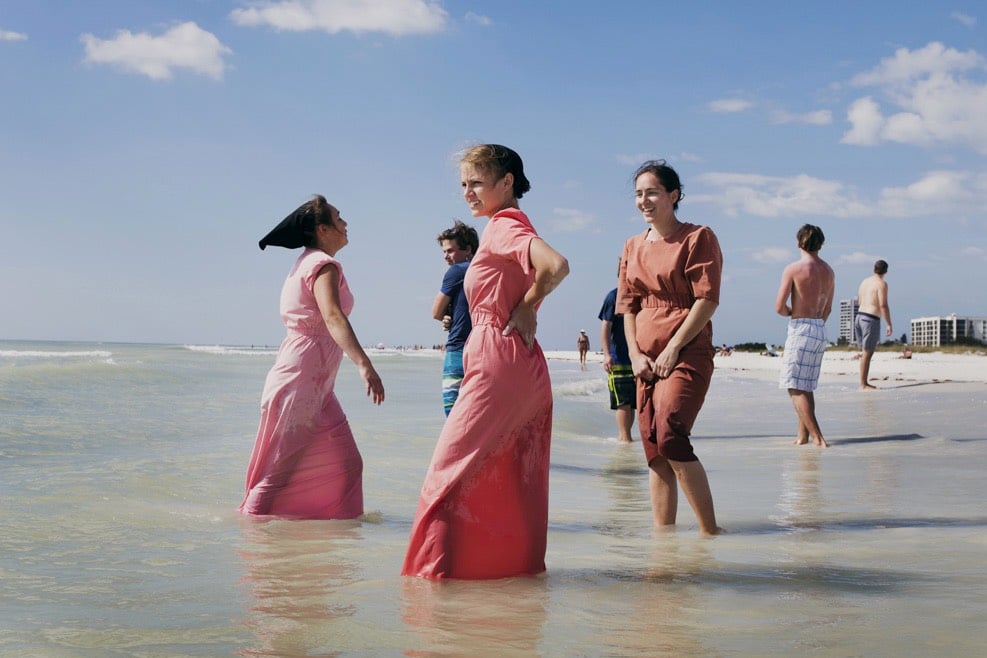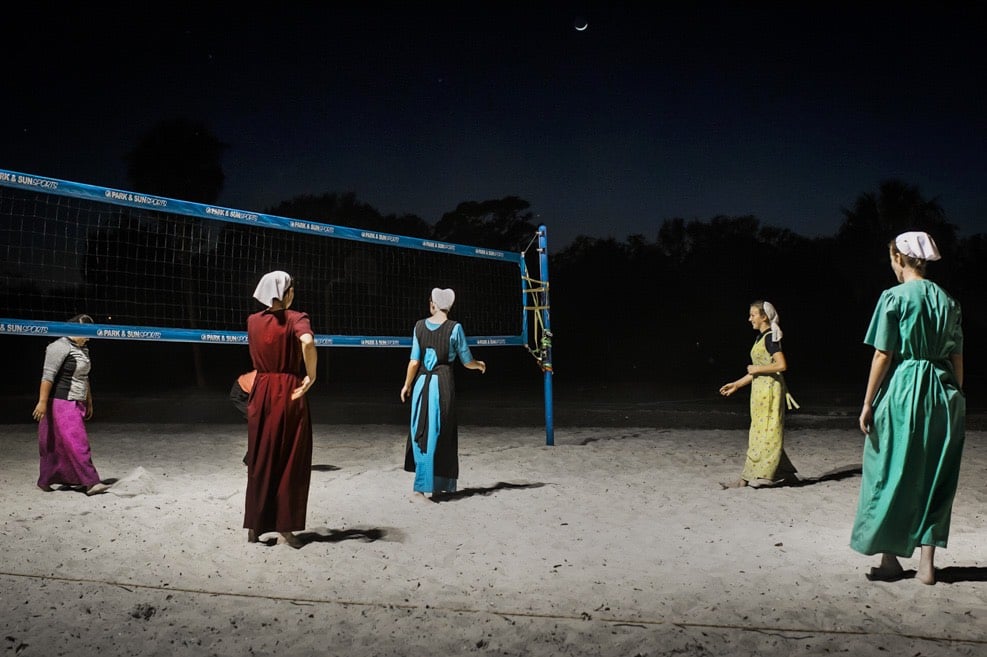

From Dina Litovsky, photos of Amish and Mennonite families on their annual Florida getaway. Her photos were recently featured in The New Yorker. I first read about Amish spring break in 2012 in the NY Times.
Walking around Pinecraft is like entering an idyllic time warp. White bungalows and honeybell orange trees line streets named after Amish families: Kaufman, Schrock, Yoder. The local Laundromat keeps lines outside to hang clothes to dry. (You have to bring your own pins.) And the techiest piece of equipment at the post office is a calculator. The Sarasota county government plans to designate the village, which spreads out over 178 acres, as a cultural heritage district.
Many travelers I spoke to jokingly call it the “Amish Las Vegas,” riffing off the cliché that what happens in Pinecraft stays in Pinecraft. Cellphone and cameras, normally off-limits to Amish, occasionally make appearances, and almost everyone uses electricity in their rental homes. Three-wheeled bicycles, instead of horses and buggies, are ubiquitous.
Pinecraft, Florida is a popular spring vacation destination for Amish and Mennonites, a place where they can let their hair down by using cellphones and electricity.
Walking around Pinecraft is like entering an idyllic time warp. White bungalows and honeybell orange trees line streets named after Amish families: Kaufman, Schrock, Yoder. The local Laundromat keeps lines outside to hang clothes to dry. (You have to bring your own pins.) And the techiest piece of equipment at the post office is a calculator. The Sarasota county government plans to designate the village, which spreads out over 178 acres, as a cultural heritage district.
Many travelers I spoke to jokingly call it the “Amish Las Vegas,” riffing off the clich’e that what happens in Pinecraft stays in Pinecraft. Cellphone and cameras, normally off-limits to Amish, occasionally make appearances, and almost everyone uses electricity in their rental homes. Three-wheeled bicycles, instead of horses and buggies, are ubiquitous.
“When you come down here, you can pitch religion a little bit and let loose,” said Amanda Yoder, 19, from Missouri. “What I’m wearing right now, I wouldn’t at home,” she said, gesturing at sunglasses with sparkly rhinestones and bikini strings peeking out of a tight black tank top. On the outskirts of the village, she boarded public bus No. 11 with six other sunburned teenagers. They were bound for Siesta Key, a quartz-sand beach about eight miles away.
Kevin Kelly on defining ourselves by technology we don’t use:
I’m interested in how people personally decide to refuse a technology. I’m interested in that process, because I think that will happen more and more as the number of technologies keep increasing. The only way we can sort our identity is by not using technology. We’re used to be that you define yourself by what you use now. You define yourself by what you don’t use.
“Tis not polite to say, English, but we told thee so.” See also. (via lined and unlined)
Kevin Kelly has written a great post called Amish Hackers, which addresses the myth that the Amish don’t use technology. As Kelly illustrates, the Amish use electricity, cell phones, cars and even the internet but their adoption of technology is not quick, they rent rather than buy (e.g. taking taxis rather than owning cars), and their default stance with any new gadget is to test first to see if it fits with their views.
One Amish-man told me that the problem with phones, pagers, and PDAs (yes he knew about them) was that “you got messages rather than conversations.” That’s about as an accurate summation of our times as any. Henry, his long white beard contrasting with his young bright eyes told me, “If I had a TV, I’d watch it.” What could be simpler?
(via waxy)







Stay Connected